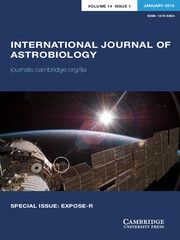A free-floating planet (FFP) is a planetary-mass object that orbits around a non-stellar massive object (e.g. a brown dwarf) or around the Galactic Centre. The presence of exomoons orbiting FFPs has been theoretically predicted by several models. Under specific conditions, these moons are able to retain an atmosphere capable of ensuring the long-term thermal stability of liquid water on their surface. We model this environment with a one-dimensional radiative-convective code coupled to a gas-phase chemical network including cosmic rays and ion-neutral reactions. We find that, under specific conditions and assuming stable orbital parameters over time, liquid water can be formed on the surface of the exomoon. The final amount of water for an Earth-mass exomoon is smaller than the amount of water in Earth oceans, but enough to host the potential development of primordial life.
